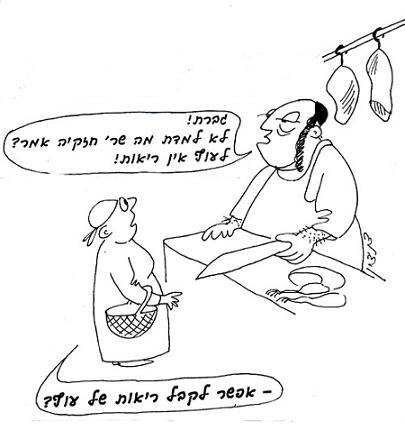
One of the sages, Chezkiyah, said that chickens have no lungs. Another sage, R’ Yochanan, said that they do have lungs and that these lungs are between the wings and that they are pink as a rosebud. The scholars asked: What did the sage Chezkiyah mean by saying that a chicken has no lungs? If he meant the obvious, that the chicken actually has no lungs — we see that it does have lungs, so we must say, the scholars argued, that the sage Chezkiyahu meant that the chicken does have lungs, but if they are damaged or infected the chicken will yet live and so is not forbidden as tereifah. It is as though he said “There is no tereifah prohibition on chicken lungs.” The scholars rejected this explanation because it is accepted that chicken lungs can make the bird tereifah just as animal lungs can make the animals. The scholars said that Chezkiyah meant, in saying that the chicken has no lungs, that the lungs are not damaged if a chicken falls from a roof or into a hot oven because its ribs protect the lungs, and therefore the chicken is not prohibited as tereifah. This explanation, too, was rejected. If, the scholars argued, Chezkiyah thought the chicken does indeed have lungs, why did the sage R’ Yochanan, who disagrees with him, have to go on at length and describe the location of the lungs and their color? You are forced to say that R’ Yochanan understood Chezkiyah to believe that chickens have no lungs at all. From this the scholars concluded that Chezkiyah had never, apparently, eaten a chicken and so was not expert and did not know that they have lungs.
(Babylonian Talmud, Tractate Chulin 57a)
